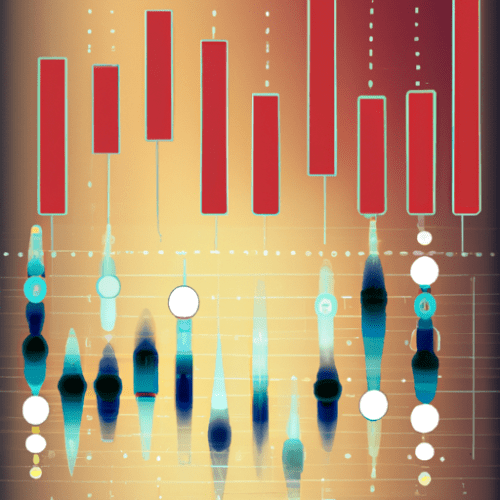
The Central African Republic (CAR) is often cited as one of the world's poorest nations despite its rich natural resources and strategic location in the heart of Africa. According to the World Bank, over 70% of the population lives below the international poverty line of $2.15 per day. The persistence of poverty in CAR is a complex and multifaceted issue intertwined with historical, political, social, and economic factors. In this post, we will explore the key statistics that underscore the depth of poverty in CAR, analyze the underlying causes behind these figures, and discuss why progress remains alarmingly slow despite both national and international efforts.
Main Research: Poverty Data and Underlying Causes
Poverty by the Numbers: A Sobering Reality
Understanding why poverty persists in the Central African Republic begins with a look at the stark statistics:
- Poverty Headcount: According to the World Bank, more than 70% of CAR's 5.5 million people live in extreme poverty, placing it among the top five poorest countries worldwide.
- GDP per Capita: CAR’s GDP per capita was just $492 in 2022 (World Bank), much lower than the Sub-Saharan African average.
- Human Development Index: CAR consistently ranks last or second-to-last on the UNDP Human Development Index, reflecting dire outcomes in life expectancy, education, and income.
- Access to Education: Only about 61% of children are enrolled in primary school, and literacy rates hover around 37% (UNICEF).
- Food Insecurity: Over 2.8 million people (more than half the population) were assessed to need humanitarian food assistance in 2023 (World Food Programme).
- Rural-Urban Divide: Approximately 74% of the population resides in rural areas, where poverty rates are higher and social services are even scarcer.
These statistics are not just numbers—they represent real people facing enormous daily struggles. The data is also a call to dig deeper into why poverty has become so deeply entrenched in CAR.
Root Causes of Persistent Poverty in CAR
While poverty is a global challenge, the situation in the Central African Republic is shaped by unique and severe impediments:
1. Prolonged Conflict and Insecurity
Since its independence in 1960, CAR has rarely experienced enduring periods of peace. Multiple coups, armed conflicts, and communal violence have destabilized the country and created an environment of constant insecurity. In the last decade, CAR has seen repeated cycles of violence leading to mass displacement. As of late 2023, more than 700,000 people are internally displaced (UNHCR).
Economic Impact: Insecurity disrupts all aspects of life and inhibits economic growth by displacing farmers, destroying markets, and discouraging investment. Rural populations, in particular, are cut off from services and jobs, perpetuating poverty.
2. Weak Governance and Political Instability
Chronic political instability has profoundly undermined CAR’s governance institutions. According to Transparency International’s Corruption Perceptions Index, CAR consistently ranks among the world’s most corrupt countries. Institutional weakness results in poor delivery of basic services, low tax collection, and misallocation of resources.
Policy Impact: With limited funds reaching those most in need, programs to eradicate poverty or improve infrastructure are hampered. The lack of effective governance also deters international donors and investors, compounding the lack of opportunity.
3. Underdeveloped Economy and Job Scarcity
CAR's economy is predominantly agrarian, with about 75% of the population dependent on subsistence agriculture. Yet, farming is highly vulnerable to climatic shocks and lacks access to modern methods or markets:
- Low Productivity: Outdated techniques and poor infrastructure limit yields and income.
- Limited Market Access: Poor roads and transportation restrict farmers’ ability to sell produce.
- Lack of Diversification: There are few jobs outside the agricultural sector. Industry remains undeveloped, and opportunities for wage employment are scarce.
Such economic stagnation makes escaping poverty difficult for the majority of the population.
4. Poor Infrastructure and Basic Services
Access to health, education, clean water, and electricity is extremely limited:
- Only 4% of the population had access to electricity in 2021 (World Bank).
- About 50% of people lack access to safe drinking water, especially in rural zones (UNICEF).
- Primary health care coverage is thin, contributing to a life expectancy of just under 55 years (World Bank, 2022).
These deficits not only undermine well-being but also hamper any progress toward economic growth and poverty reduction.
5. Education Gaps and Youth Challenges
Education is a proven pathway out of poverty, yet CAR faces some of the lowest enrollment and literacy rates in Africa. Ongoing conflict disrupts schooling, and many children are forced to work or are recruited by armed groups. The youth bulge—over 50% of CAR’s population is under 18—places further strain on under-resourced schools.
6. International Isolation and Limited Investment
Due to persistent insecurity, poor infrastructure, and high political risk, foreign direct investment is minimal in CAR. Exports are limited mainly to diamonds, gold, and timber, but much of this trade is illicit and bypasses the formal economy, resulting in few benefits for the wider populace.
7. Health Crises and Humanitarian Needs
Poverty in CAR is perpetuated by a vicious cycle of hunger, poor health, and limited ability to work or study. The prevalence of malnutrition, malaria, and preventable diseases is exacerbated by the lack of functioning health infrastructure. According to the World Food Programme, more than 600,000 children under five are acutely malnourished—a statistic both shocking and preventable.
Conclusion: Breaking the Cycle Requires More Than Data
The statistics on poverty in the Central African Republic are among the most extreme in the world. Numbers alone, however, only tell part of the story. The persistence of poverty in CAR is a result of interlocking causes—from decades of conflict and poor governance to the lack of investment in people and infrastructure.
What sets CAR apart is not just the depth of poverty, but also the formidable challenges to breaking out of its grip. Addressing these issues requires a multidimensional approach, including:
- Peacebuilding and reconciliation to stabilize communities and restore livelihoods.
- Strengthening institutions to improve governance, transparency, and service delivery.
- Investments in education and health to create long-term pathways out of poverty.
- Support for agricultural modernization and diversification of the economy.
- International cooperation to ensure adequate humanitarian and development funding.
Progress is possible—and there are signs of hope on the horizon, as grassroots organizations, regional partners, and international agencies work to address both immediate and structural issues. But the road ahead is long, and meaningful change will require sustained effort and the involvement of CAR's citizens at every level.
Ultimately, the fight against poverty in the Central African Republic is a global challenge, demanding attention not just from within, but from the whole world. Only with coordinated action and a deep understanding of the underlying causes revealed by the data can we hope to see a future where CAR's citizens can thrive free from poverty.
Learn more about poverty statistics by country and discover how data can drive change. Browse our database for more insights and share your thoughts below!








